Samkhya Darshan Part One
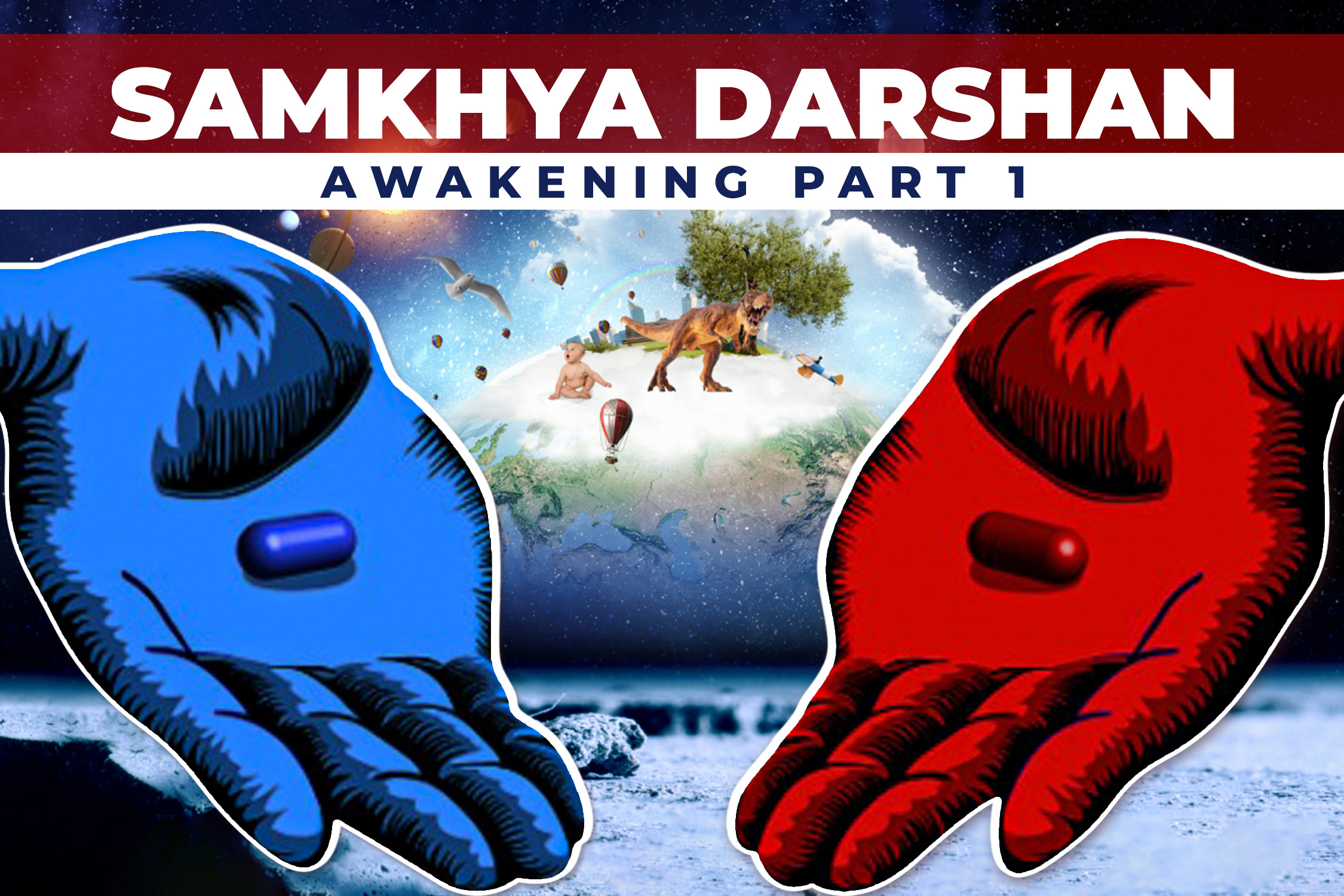

Table of Contents
Duo's Dilemma
Kavya and Manvi had been inseparable friends since childhood. They shared dreams, laughter, and the trials of growing up together. But as they entered adulthood, life became increasingly complicated. Kavya was an aspiring artist, struggling with creative blocks and the pressure to meet societal expectations. Manvi was a dedicated teacher, weighed down by the responsibilities of her job and the endless cycle of tasks that seemed to drain her joy.
One chilly evening, they found themselves by a quiet lake near the theater, where they had come to watch the latest movie, The Matrix. It was a spot they often visited to get away from the noise of everyday life. The lake reflected the setting sun, casting a warm light that matched the unease they were feeling inside.
Kavya gazed at the ripples in the lake and said, "Manvi, I feel lost. My art used to flow so freely, but now it feels like I'm just going through the motions. Everything feels so uncertain and unfulfilling." Manvi sighed, "I understand, Kavya. I feel as though I'm stuck in a cycle of never-ending work and expectations. Despite my efforts, I can't seem to find the joy I once had in teaching. It's as if I'm disconnected from the essence of who I am."
The Invervention of Purush


As they shared their frustrations, a young man sitting nearby noticed them. His presence was calming, and his eyes held a deep wisdom that intrigued them. He approached with a gentle smile and asked, 'Is it The Matrix that's troubling you, or is it ignorance?'
Manvi glanced at the man. "Excuse me," she said softly, "I didn’t quite understand your concerns earlier." The man turned to her with a friendly smile. "Oh, I was just saying that sometimes, understanding ourselves better can bring a lot of clarity. By the way, my name is Shubham. I study AI and Consciousness. Have you ever explored the teachings of Samkhya by Kapil Muni? It might offer some interesting perspectives."
Manvi’s eyes lit up with interest. "Actually, that sounds fascinating. I’ve always been curious about how ancient philosophies align with modern thinking. We have some time before the movie starts—why don’t we discuss it a bit more?" Shubham nodded enthusiastically. "That sounds like a great idea. Let’s dive into it and see where the conversation takes us." Kavya and Manvi looked at each other with curiosity. They had heard of various philosophies but had never delved deeply into Samkhya Yoga.
The Plays of Prakriti


Shubham began to explain, "In Samkhya Yoga, we believe that there are two essential aspects of existence: Purusha and Prakriti. Purusha is the pure consciousness within each of us, the eternal witness that remains unchanged. Prakriti is the material world, constantly in flux and composed of three qualities, or gunas: Sattva (balance), Rajas (activity), and Tamas (inertia)."
He continued, "Our suffering arises when we mistake ourselves for the changing aspects of Prakriti. We get entangled in our roles, achievements, and failures, forgetting that our true self, Purusha, is separate from these fluctuations."
Kavya asked, "So, if we are all Purusha, why do we feel so bound by our circumstances?"
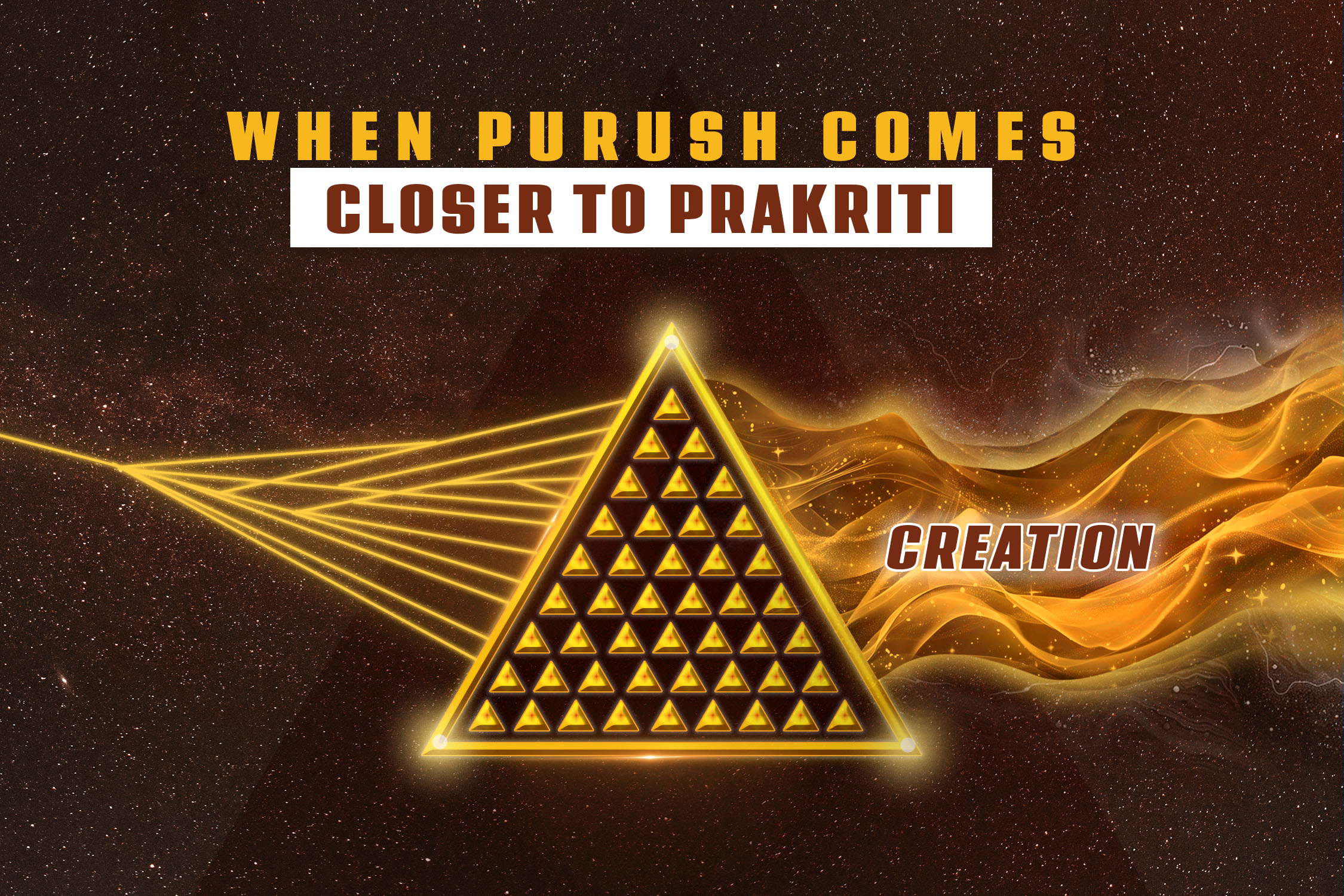
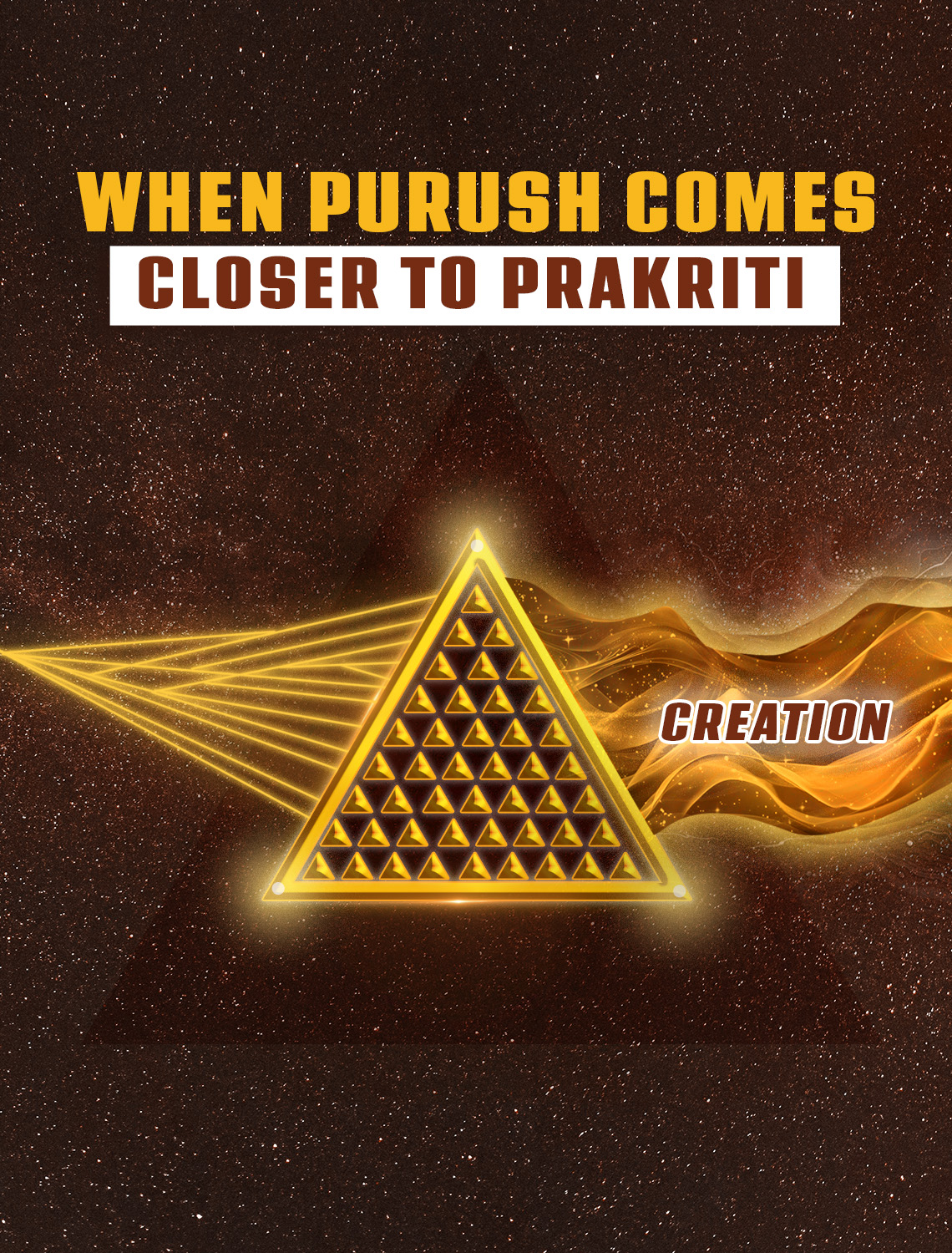
Shubham smiled, "That's because of the interaction between Purusha and Prakriti. Initially, Prakriti is in a state of perfect balance, but the presence of Purusha disturbs this equilibrium, leading to the creation process.
The first manifestation is Mahat, or Cosmic Intelligence, which embodies the universal principle of intellect and discernment. From Mahat emerges Ahamkara, the cosmic sense of individuality or ego. This Ahamkara, influenced by the three Gunas (Sattva, Rajas, and Tamas), leads to the formation of cosmic Gyanendriya (organs of knowledge) and cosmic Karmendriya (organs of action). These cosmic faculties enable perception and interaction within the universe.


Manvi was intrigued. "What about our senses? How do we, as individuals, fit into this?" she asked.
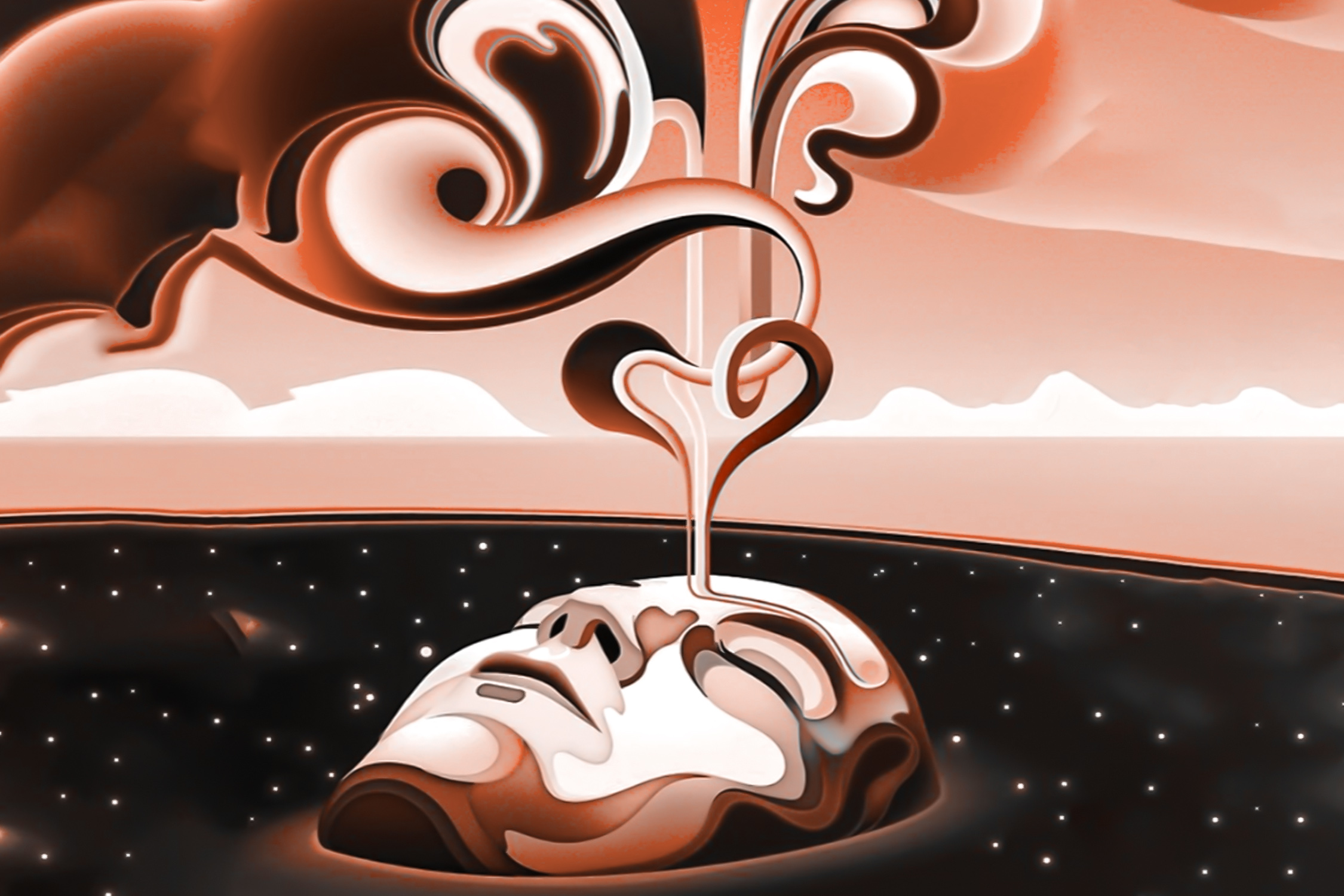

Shubham smiled, understanding her curiosity. "Not only at the individual level but also in an infinite cycle across many layers. For us, you must have heard of the principle of Yat Pinde Tat Brahmande," he began. "It translates to 'Everything outside you is also within you,' or 'Your body reflects the universe.' In more literal terms, it means 'What is in the microcosm is also in the macrocosm.'"
"Think of it this way," he continued. "In this concept, Pindanda refers to the microcosm, which is the individual person or purush, and Brahmanda refers to the macrocosm, or the universal purush. Essentially, what exists on the larger, cosmic scale also exists within us on an individual level."
Manvi nodded, urging him to continue. "At the microcosmic level," Shubham explained, "the jiva’s intellect, or buddhi, is a reflection of the cosmic Mahat, which represents universal intelligence or consciousness. In us, it’s our capacity for discernment and decision-making. From this Mahat, Ahamkara, or ego, arises. Ahamkara is the principle of individuation, emerging both at the cosmic and individual levels."
"So," Shubham elaborated, "Cosmic Ahamkara leads to the differentiation of elements, senses, and the material world in the universe. In individuals, Ahamkara gives rise to the sense of 'I' and 'mine,' forming our personal identity and shaping how we perceive the world around us."
Manvi was starting to see the connection. "So our senses are part of this creation process too?" she asked. "Exactly," Shubham affirmed. "The process continues similarly at both the cosmic and individual levels. From Ahamkara, the five subtle elements (tanmatras), five gross elements (mahabhutas), the senses (jnanendriyas), and the organs of action (karmendriyas) are created. At the macrocosmic level, these elements and senses form the structure of the universe. In the microcosm, they make up our physical body, mind, and sensory apparatus."
He paused to let this sink in, then added, "So, from the fundamental level of Mahat Tattva, Ahamkara is created, and from Ahamkara, the jnanendriyas and karmendriyas emerge. The jnanendriyas, or cognitive senses—hearing, touch, sight, taste, and smell—allow us to perceive the external world. The karmendriyas, or organs of action—speech, hands, feet, excretory organs, and reproductive organs—enable us to interact with and influence our surroundings."

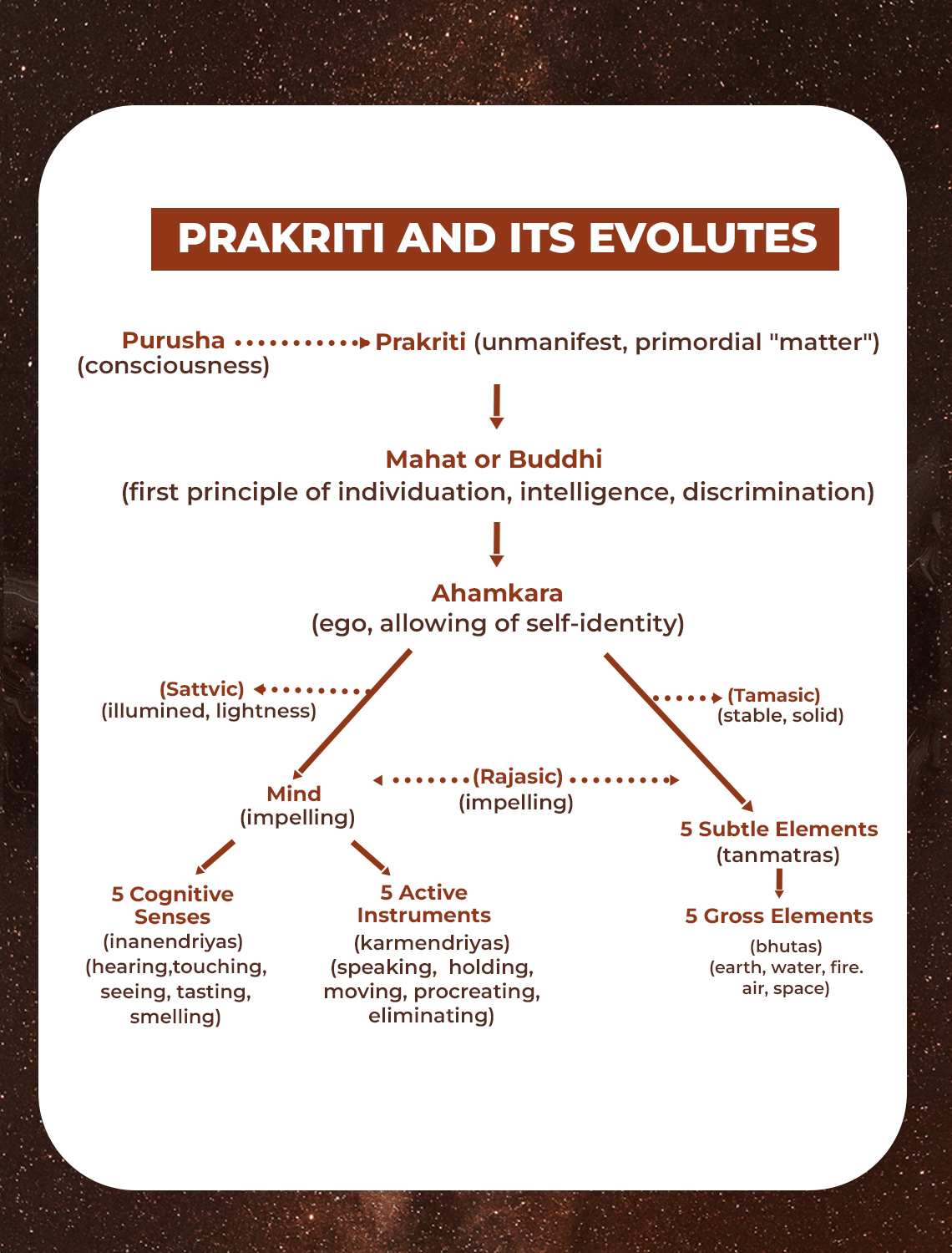
Shubham concluded, "The mind, or manas, acts as an intermediary between these senses and our intellect. It's fascinating, isn't it? How our entire being—our senses, mind, and actions—all mirror the vast universe in a profound and interconnected way." Kavya nodded, feeling a spark of understanding. "So, our mind and senses are part of Prakriti, constantly in motion and influenced by the gunas. But our true self, Purusha, is beyond these, just witnessing everything?"
"Exactly," Shubham affirmed. "The mistake we often make is identifying ourselves with the mind, body, and senses, which are all part of Prakriti. This identification leads to suffering because Prakriti is always changing. To find peace, we must recognize our true nature as Purusha, the unchanging observer."
Manvi asked, "But how can we disconnect from the constant thoughts and emotions that dominate our mind?" Shubham's eyes shone with kindness. "Through practices like meditation and self-awareness, we can gradually detach ourselves from the fluctuations of the mind. When we learn to observe our thoughts and emotions without getting caught up in them, we start to connect with our true self, Purusha. This awareness brings clarity and helps us find joy in simply being, without the need to constantly strive for more."
Ceasefire: A Temporary Unmanifestation
Kavya and Manvi sat quietly, absorbing Shubham's words. The lake, which had been a silent witness to their struggles, now seemed to reflect a sense of calm.
Suddenly, the theater bell rang, signaling that the movie was about to start. Shubham turned to both of them with a smile. "It looks like the movie is about to begin. How about we continue our discussion after the film?" Kavya and Manvi nodded in agreement, their curiosity piqued. "Sounds good," Manvi said. "We’ll definitely pick up where we left off."
Kavya then asked, "Did you come alone for the movie?" Shubham replied, "Yes, actually. I’m new to the city and came here for a conference on AI and human consciousness at New City campus." Shubham grinned, "Great. Enjoy the movie, and I’ll see you both after."
To be continued...
क्या आप योग में करियर बनाने को लेकर "Confuse" हैं?
Join Free Webinar By Maneesh Sir
- Know About Opportunities in the Growing Yoga Sector.
- Learn from a Yoga Teacher with Over 15 Years of Experience.
- Special Offer for Webinar Attendees.

